
calamus oil obtained from plants growing in Banglades ....
方案详情

968 Ivana Bonaccorsi and Antonella CotroneoJasim Uddin Chowdhury and Mohammed Yusuf STUDIES ON ESSENTIAL OILS BEARING PLANTS OFBANGLADESH.PART VII.COMPOSITION OF THE RHIZOMES OIL OF ACORUS CALAMUSL. (SWEET FLAG) ANNO 1997 STUDIES ON ESSENTIAL OILS BEARING PLANTS OFBANGLADESH. PART VII.COMPOSITION OF THE RHIZOMES OIL OF ACORUSCALAMUS L. (SWEET FLAG) Ivana Bonaccorsi and Antonella Cotroneo Dipartimento Farmaco-chimico, Facoltà di Farmacia, Universita diMessina, Viale Annunziata, 98168 Messina, Italy Jasim Uddin Chowdhury and Mohammed Yusuf BCSIR laboratories, P.O. Chittagong Cantonment, Chittagong 4220,Bangladesh Abstract Results on the composition of a Calamus oil obtained from plantsgrowing in Bangladesh are reported. The oil has been isolated byhydrodistillation and has been fractionated by chromatography on acolumn packed with neutral alumina. The whole oil and the fractions obtained have been analysed by GCand GC/MS. 59 components have been identified, that correspond toabout 93% of the whole oil. (Z)-Asarone is the main component, which represents about 81% ofthe oil. KEY WORD INDEX: Acorus calamus L.; Essential oil compo-sition; (Z)-Asarone. GLI OLII ESSENZIALI DEL BANGLADESH. NOTA VII. LACOMPOSIZIONE DELL'OLIO ESSENZIALE ESTRATTO DAIRIZOMI DI ACORUS CALAMUS L. (SWEET FLAG) Riassunto Vengono riportati i risultati relativi alla composizione di un olio diCalamo estratto da piante cresciute in Bangladesh. L’olio, isolato peridrodistillazione, e stato frazionato mediante cromatografia su colonnadi allumina neutra. L'olio come tale e le frazioni sono stati analizzatiper GC e GC/MS. Sono stati identificati 59 componenti pari a circa il 93% dell'interoolio. Il componente principaleè lo (Z)-Asarone che rappresenta circaP81% dellolio. PAROLE CHIAVE. Acorus calamus L.; Composizione dell’olioessenziale; (Z)-Asarone. Introduzione Acarus calamus L., a specie of the Araceae family, is a herbaceous,perennial plant, which comes from Northern Asia. It is widespread inEurope, in India and in Northern America. It usually grows near theshores of lakes or near a water course (1). The rhyzomes of Calamusand its estract have been used as medicine for their antispasmodic,relaxing, hipertensive, antiasthmatic, antibacterial and vermifugeproperties. The essential oil extracted from rhyzomes has been usedfor flavoring alcoholic beverages, as insecticide and insect-repulsive(2-4). Three varieties of the species A. Calamus can be distinguished(5,6): a diploid variety, fertile, morphologically rather omogeneous,with two chemotypes, widespread in Northern America; a triploidvariety, sterile, morphologically and chemically omogeneous, wide-espread in Europe; a tetrapoid variety, partially fertile, of which it is espread in Europe; a tetrapoid variety, partially fertile, of which it ispossible to distinguish two principal ecotypes, the subtropical-tropicaland the temperate one; and some eterotypes, widespread in East Asia,India and Japan. Moreover, Vashit and Handa (7) report informationon an esaploid variety, that grows in the Kashmir region. Wulff andStahl (8) and Cavazza (9) state that the different varieties of Calamusdiffer each other mainly for their content of (Z)-Asarone, that ispresent as trace in the oils of the diploid varieties, in moderate amount(2.5-9.5%) in the oils of the European triploid varieties, and it is themain component (77-82%) in the oils of the tetraploid plants. Thereported content of (Z)-Asarone (4.6%) in the oils of the esaploidplants of Kashmir (7) is near to that of the oils of the triploid plants. Until 1995, the wide literature on the composition of Calamusessential oil has been reviewed by Lawrence (3,10). More recentpapers report the composition of oils extracted from plants comingfrom Hymalaya (11), India (12), Europe (12), China (13,14) andMongolia (15). This paper reports the results obtained with modern analyticaltechniques on the composition of Calamus oil extracted fromrhyzomes of plants growing in Bangladesh. Only a paper, pubblishedin 1984, of Manzoor-i- Khuda et al. (16), reports results obtained byTLC for Calamus oil from plants growing in Bangladesh. Esperimental The rhyzomes were harvested in the experimental field of BCSIRLaboratoires, Chittagong, Bangladesh. The rhyzomes were washed,set free from roots, dryed, cleaned, cut into small pieces, crushed andhomogenized. Then the essential oil was extracted by hydrodistillationin a Clevenger system. The oil was collected, dryed on anidroussodium sulphate and then analysed by HRGC/FID and HRGC/MS. The essential oil was separated by open column chromatography using neutral allumina as stationary phase. The fractions obtainedwere then analysed by HRGC/FID and by HRGC/MS under the sameexperimental conditions used for the whole oil. Column chromatography: The essential oil was fractioned by chromatography on a columnfilled with neutralalumina, using petroleum ether, mixtures ofpetroleum ether and diethyl ether, diethyl ether and ethyl alcohol aseluents, under the following experimental conditions: glass column,1.6 cm i.d.; adsorbent, neutral alumina, activity grade II, 20 grams;eluents: fraction 1, petroleum ether, 50 ml; fraction 2, petroleum ether:diethyl ether, 95:5, 50 ml; fraction 3, petroleum ether:diethyl ether,90:10, 50 ml; fraction 4, petroleum ether:diethyl ether, 80:20, 50 ml;fraction 5, petroleum ether:diethyl ether, 50:50, 50 ml; fraction 6,diethyl ether, 50 ml; fraction 7, ethyl alcohol, 50 ml. Amount of oilused for fractionation, 100pl. GC/FID analysis: A 5160 Mega Series Gas Chomatograph (Fisons Instruments,Milan, Italy) equipped with a data processor Shimadzu C-R3A, wasused with a SE-52 fused silica column, 25 m x 0.32 mm, 0.40-0.45um film thickness (Mega, Legnano, Italy); column temperature, 45℃(6 min) to 250℃ at 3℃/min; injector temperature, 250℃; detectortemperature, 250℃; injection mode, split; split ratio 1:50; volumeinjected, 1pl of the oil; carrier gas, He, 100 Kpa. GC/MS analysis A gas chromatograph mass spectrometer (quadrupole) system MD800 (Fisons Instruments, Milan, Italy) equipped with Adams’library(17) and a home made bank FFC (Flavor and Fragrance Components)(18) was used with a DB-5 fused silica column, 30 m x 0.25 um filmthickess (J & W, Folson, California, U.S.A.); column temperature, (H-8) euunfe rennou uo Ayder8ojewonyp uumpoo Kq pouneqo suonoeryan jopue (V) Ito renuesse snurereo jo sureiBoneuronyo sel uo [eno 午 -一m Tab. 1 -Composition of Acarus Calamus Oil. 60℃ to 240° at 3.0°C/min; injector temperature, 250℃; injectionmode, split; split ratio, 1:20; volume injected, 1ul of a solution 1/20 inpentane of the oil; carrier gas, He, 83 Kpa; linear velocity, 35 cm/secat 60℃; interface temperature, 250℃; source temperature, 200℃; EI*acquisition; mass range, 41-300 amu. Results The separation on neutral alumina allowed the isolation of 7 fractions that contained components of increasing polarity.Figure 1 reports the total ion chromatograms of Calamus oil (A) andof the fraction separated by column chromatografy (B-H). Table 1reports the composition of the oil. The GC and GC/MS analysis of thefraction separated on alumina allowed the identification and thequantitative analysis even of those components coeluted in thecromatogram of the whole oil, such as a-humulene coeluted with (Z)-methyl isoeugenol, B-selinene and valencene coeluted with shyobu-none, y-cadinene coeluded with epishyobunone. As can be seen from the chromatograms reported in Figure 1, 59components have been identified, that represent about 93% of the oil.(Z)-Asarone is the main component of the oil, with a percentage ofmore than 81% of the whole oil. In addition to (Z)-asarone, the oilcontains about 3% of alchenyl polymetoxybenzenes ((Z)-methylisoeugenol, (E)-methyl isoeugenol, elemicin, (Z)-isoelemicin and (E)-asarone). Epishyobunone (3.31%),(Z)-isoelemicin (1.72%) and (Z)-methyl isoeugenol (1.11%) are the components other than (Z)-asaro-ne, present in amounts greater than 1%. The sesquiterpene hydro-carbon fraction is qualitatively very rich, and contains 21 components.B-Gurjunene and 8-cadinene are the main components of this fraction. On the whole, the quantitative composition of the oil, at least forthe main components, is similar to that of Calamus oils extracted fromtetraploid plants grown in India (6,11,12). REFERENCES 1..(GUENTHER E.: The essential oils, vol.II, Van Nostrand, NewYork (1949). 2. VIRMANI O.P., SRIVASTAVA G.N., DATTA S.S.: IndianPerfumer, 21 (3), 103 (1977). 3. LAWRENCE B.M.: Progress in Essential Oils, Perf. Flav., 5(7),49(1981). 4. YUSUF M., CHOWDHURY J.U., WAHAB M.A., BEGUMJ.: Medicinal Plants of Bangladesh. BCSIR, Dhaka, Bangladesh(1994). 5. ROST L.C.M.: Planta Medica, 37, 289 (1979). 6. MAZZA G.: J. Chromatogr., 328, 179 (1985). 7. VASHIST V.N., HANDA K.L.: Soap. Perfum Cosmet., 37,135 (1964). 8. WULFF H.D., STAHL E.: Naturwissenschaft, 47,114(1960).In reference 3. 9..CAVAZZA G.: Ann. Fals Exp. Chim., 69, 833 (1976). 10. LAWRENCE B.M.: Progress in Essential Oils, Perfum. Flav., 8(4), 63(1983). 11. NIGAM M.C., AHMAD A., MISRA L.N.: Indian Perfumer,34, 282 (1990). 12. LANDER V., SCHREIER P.: Flavour Fragr. J., 5, 75 (1990). 13. HUANG Y., HE Z., CAO Y., WU J.: Sepu, 11 (5), 267(1993). 14. LI M., JIANG Z.: Zhongguo Zhongyao Zazhi, 19 (5), 274(1994). 15..TODOROVA M.M., OGNYANOV I.V., SHATAR S.: J.Essent. Oil Res., 7, 191 (1995). 16. MANZOOR-i-KHUDA M., FARUQM.O., RAHMANN M.,YUSUF M., WAHAB M.A., CHOWDHURY J.: Bangladesh J.Sci. Ind. Res.,19, 151 (1984). 17. ADAMS R.P.: Identification ofessential oil components by gaschromatography/mass spectroscopy, Allured Publ. Corp., CarolStream, Illinois, U.S.A.(1995). 18. Flavour and Fragrance Library, C.E. Instruments, Rodano,Milano, Italy.
确定
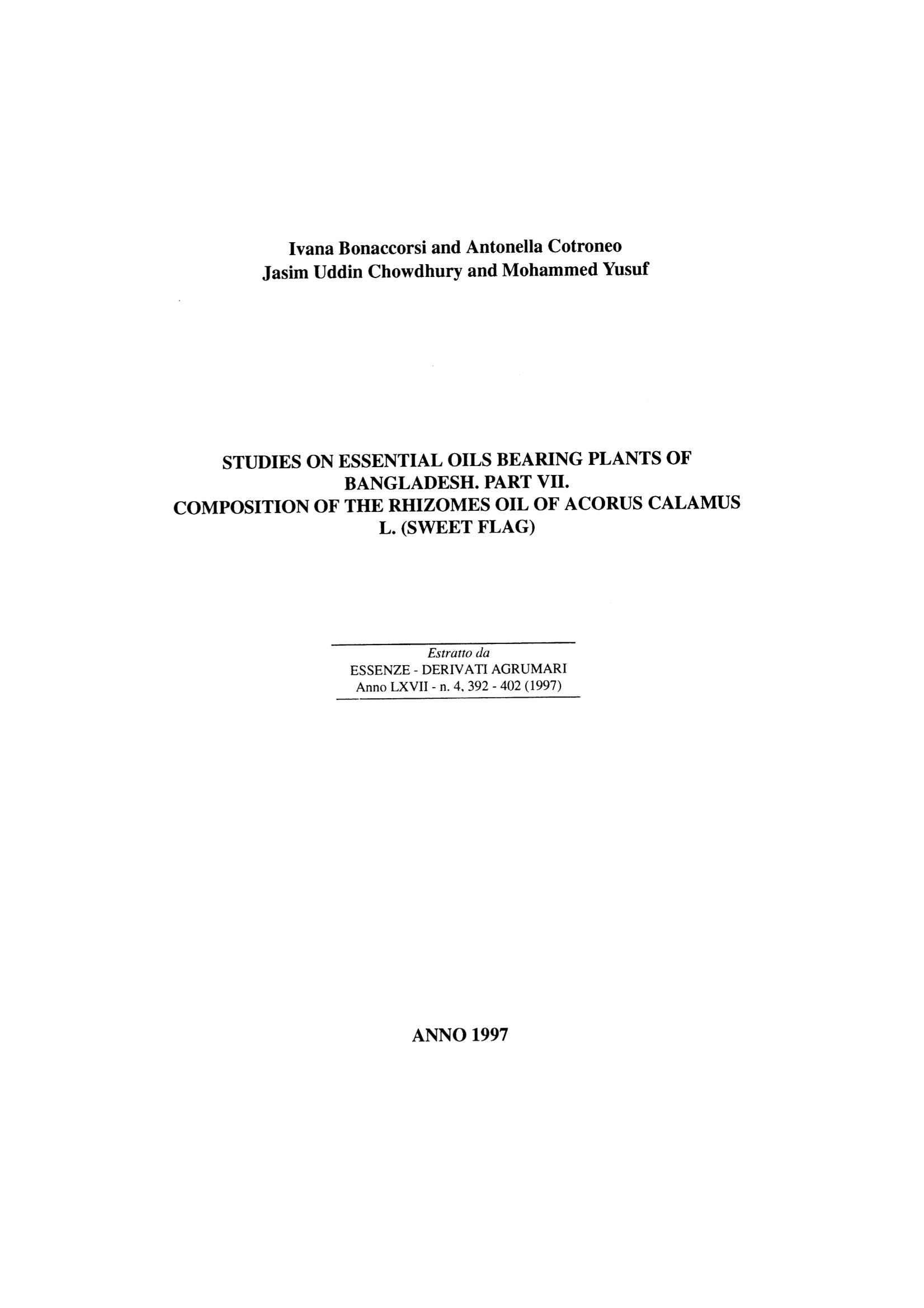
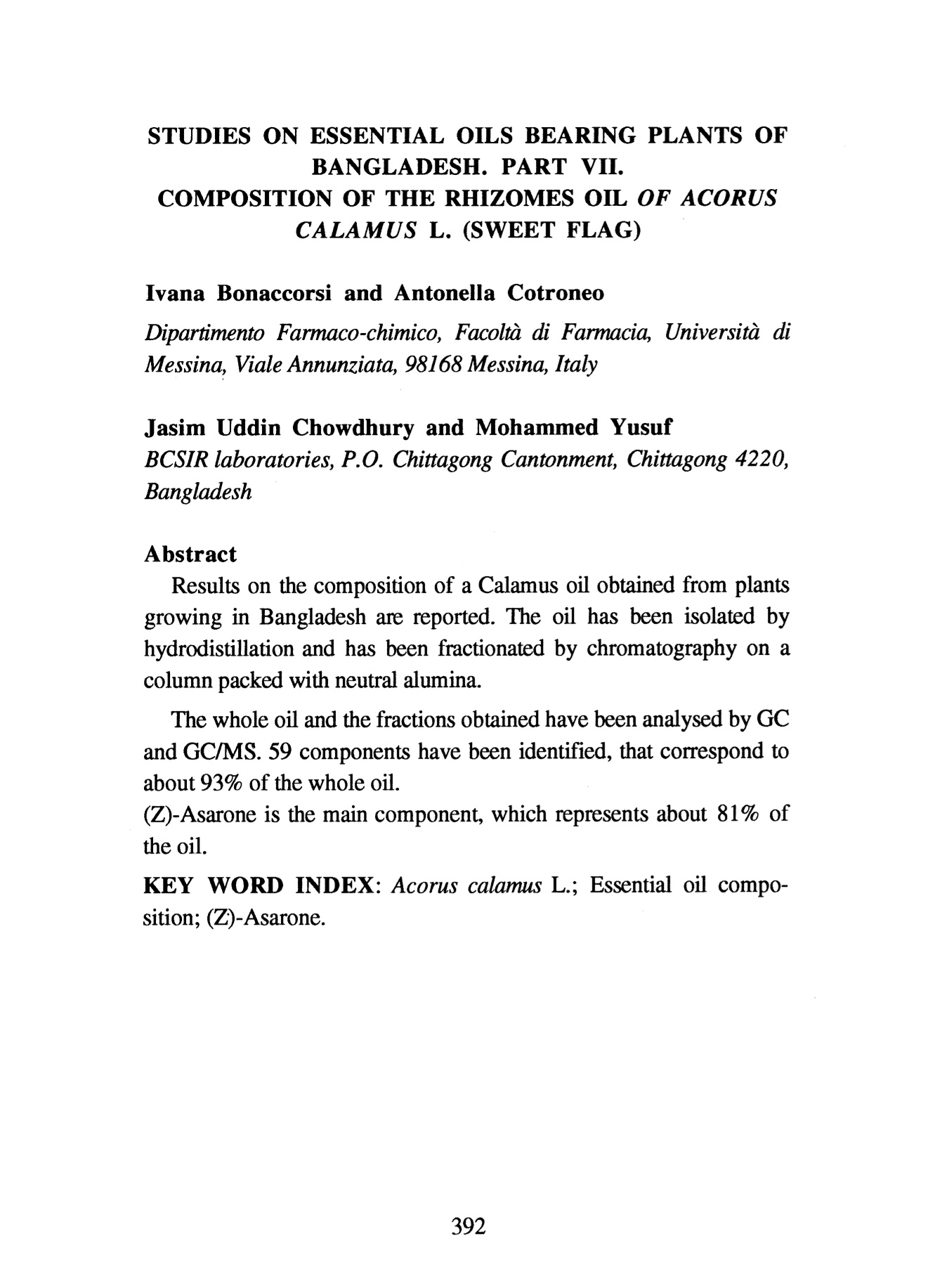
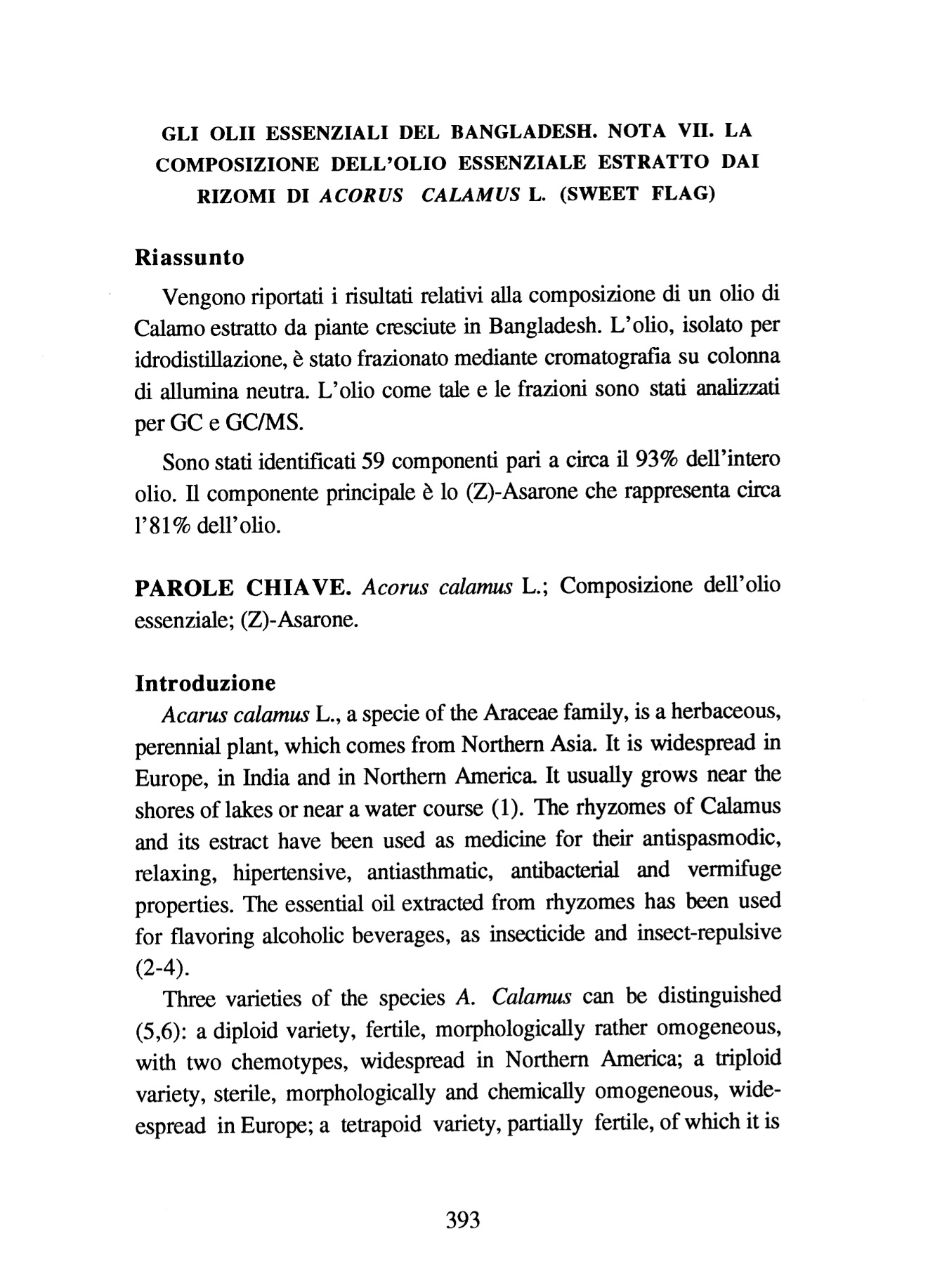
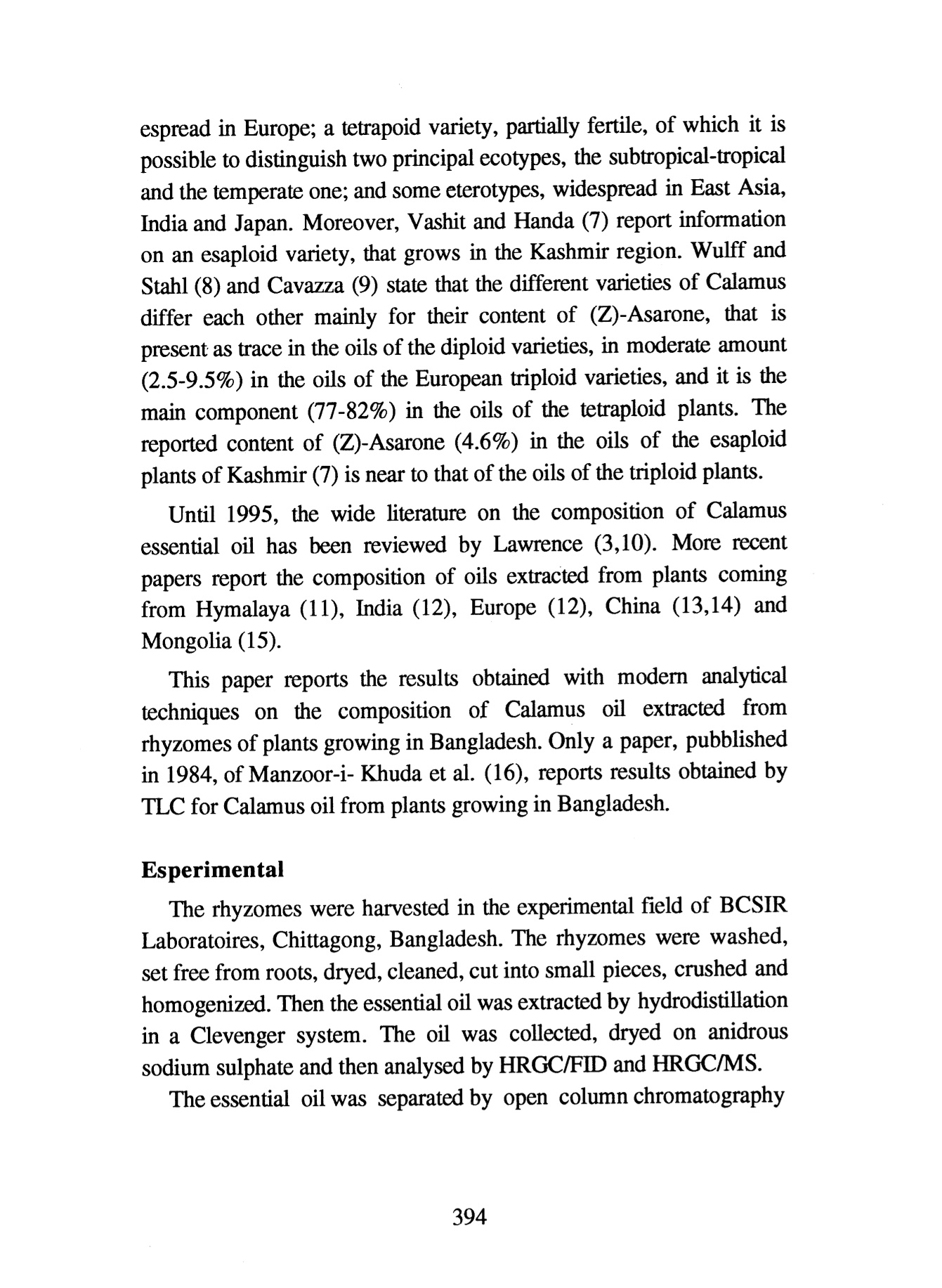

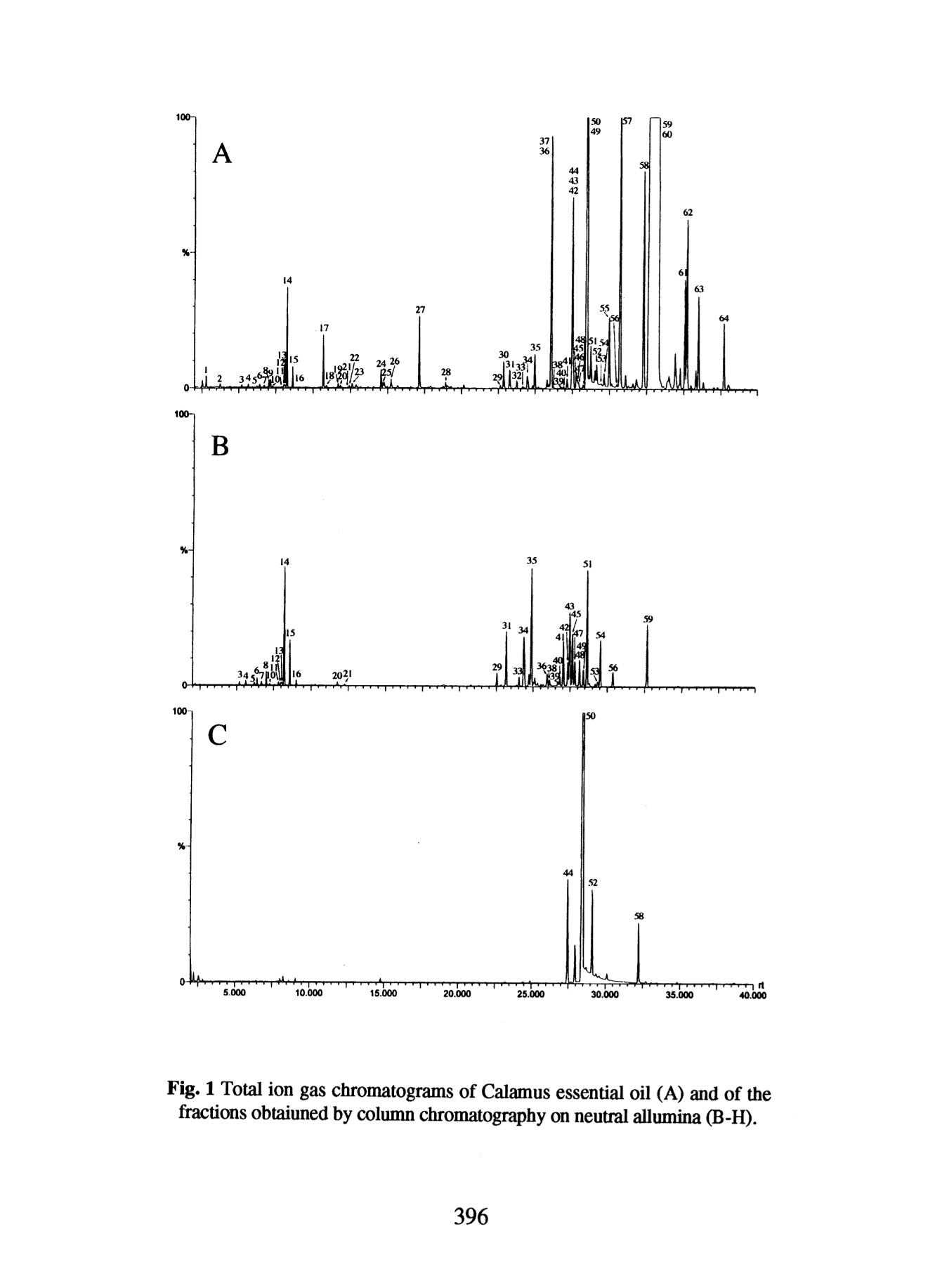
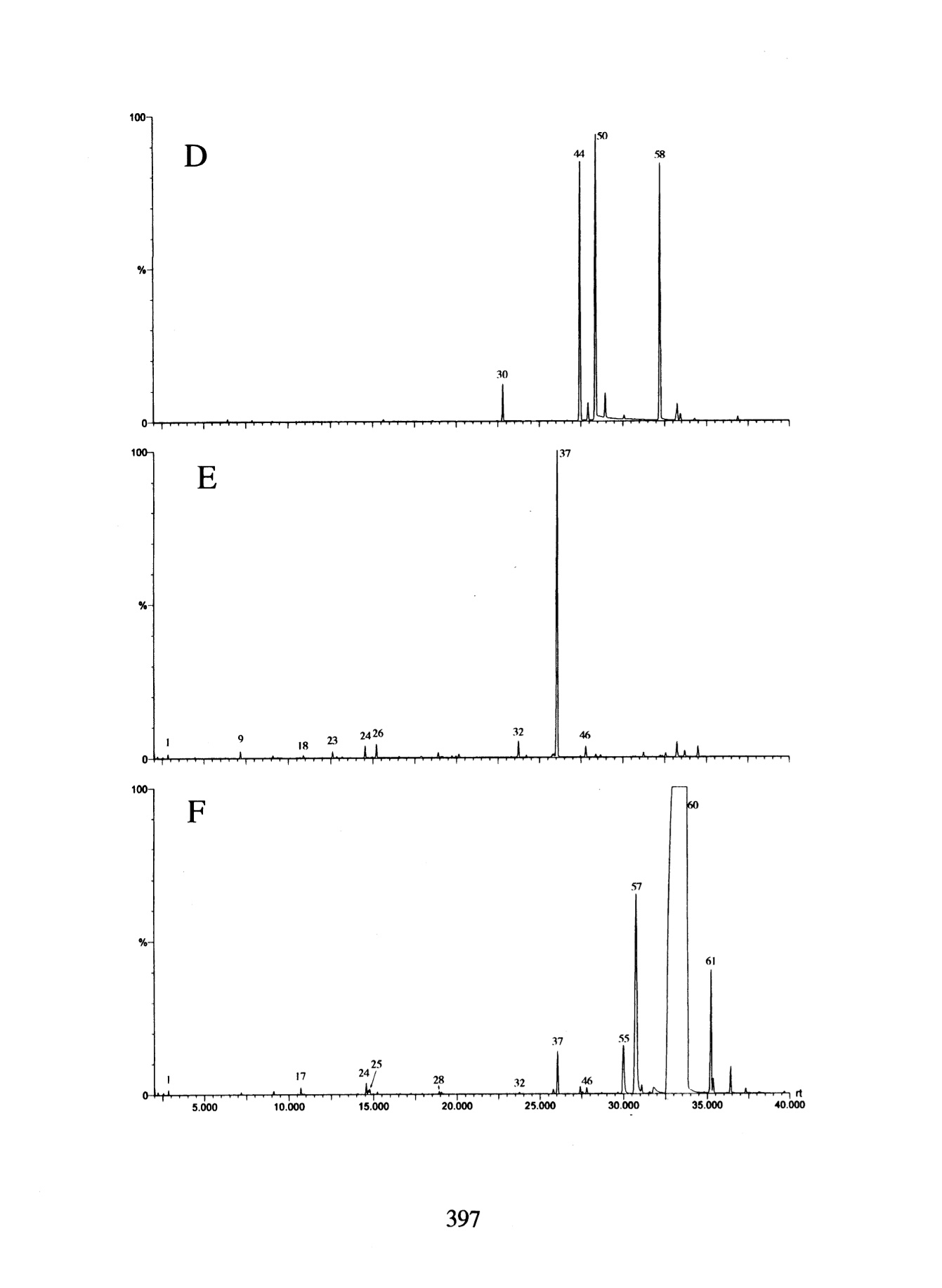
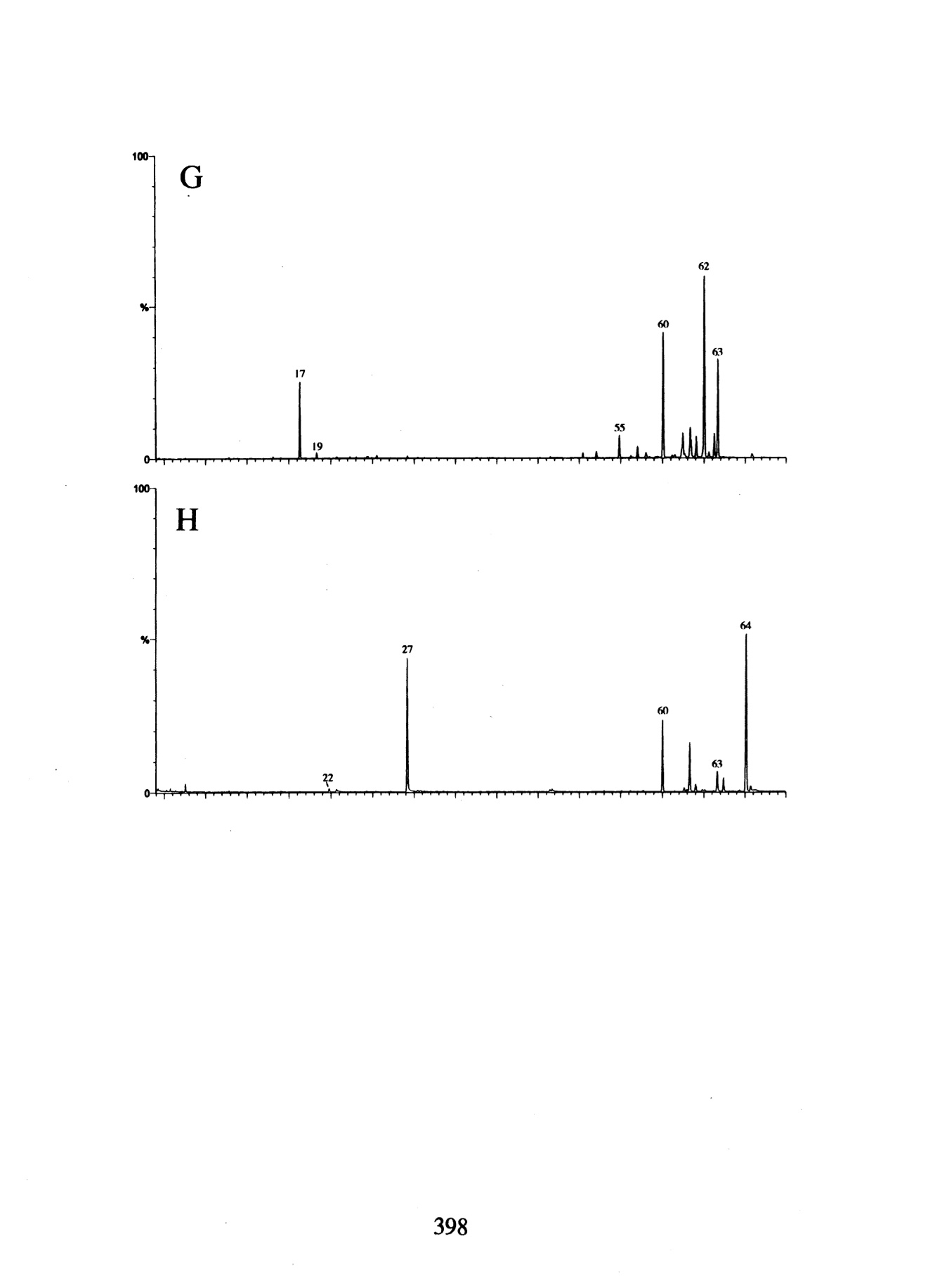
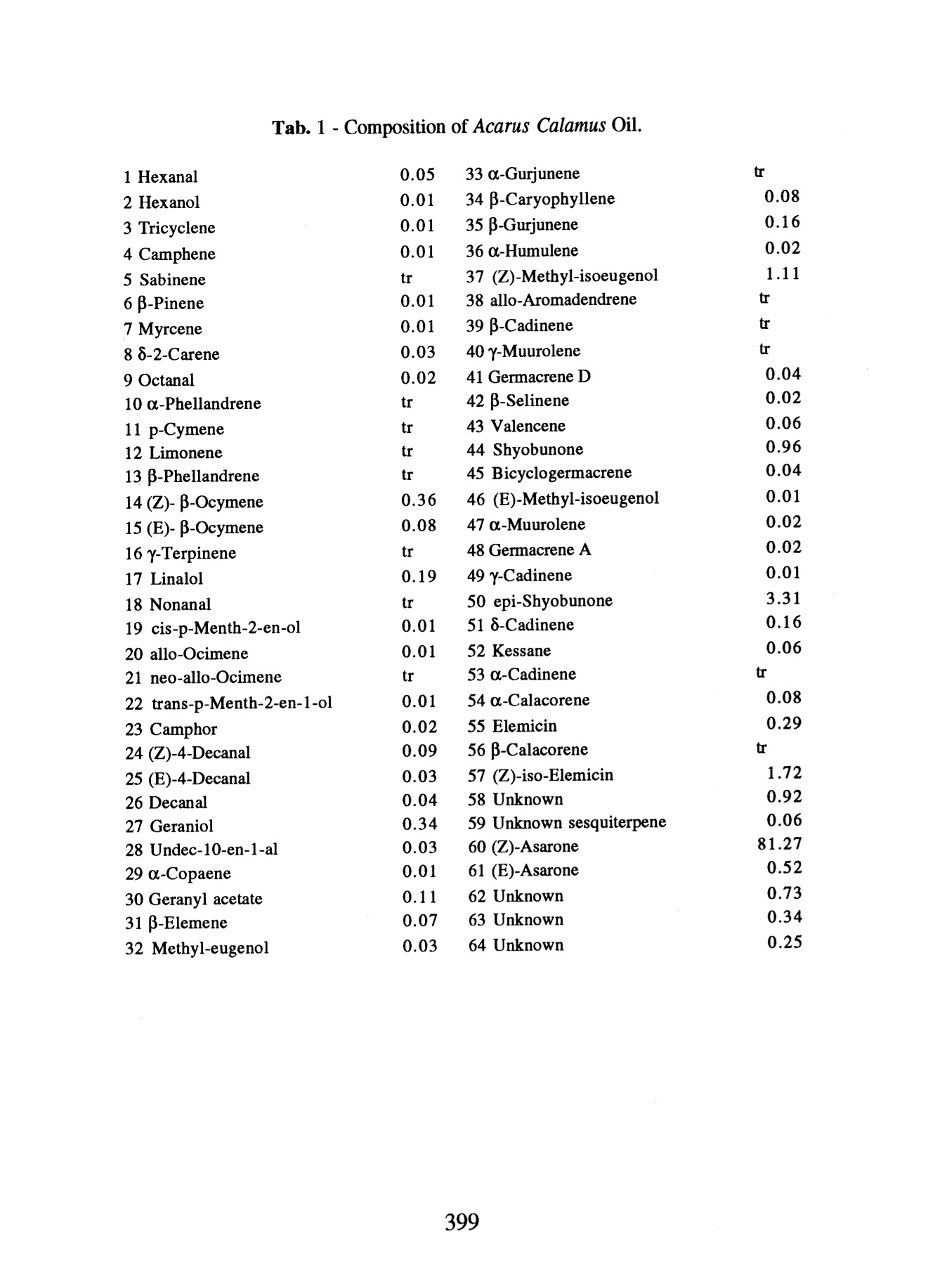

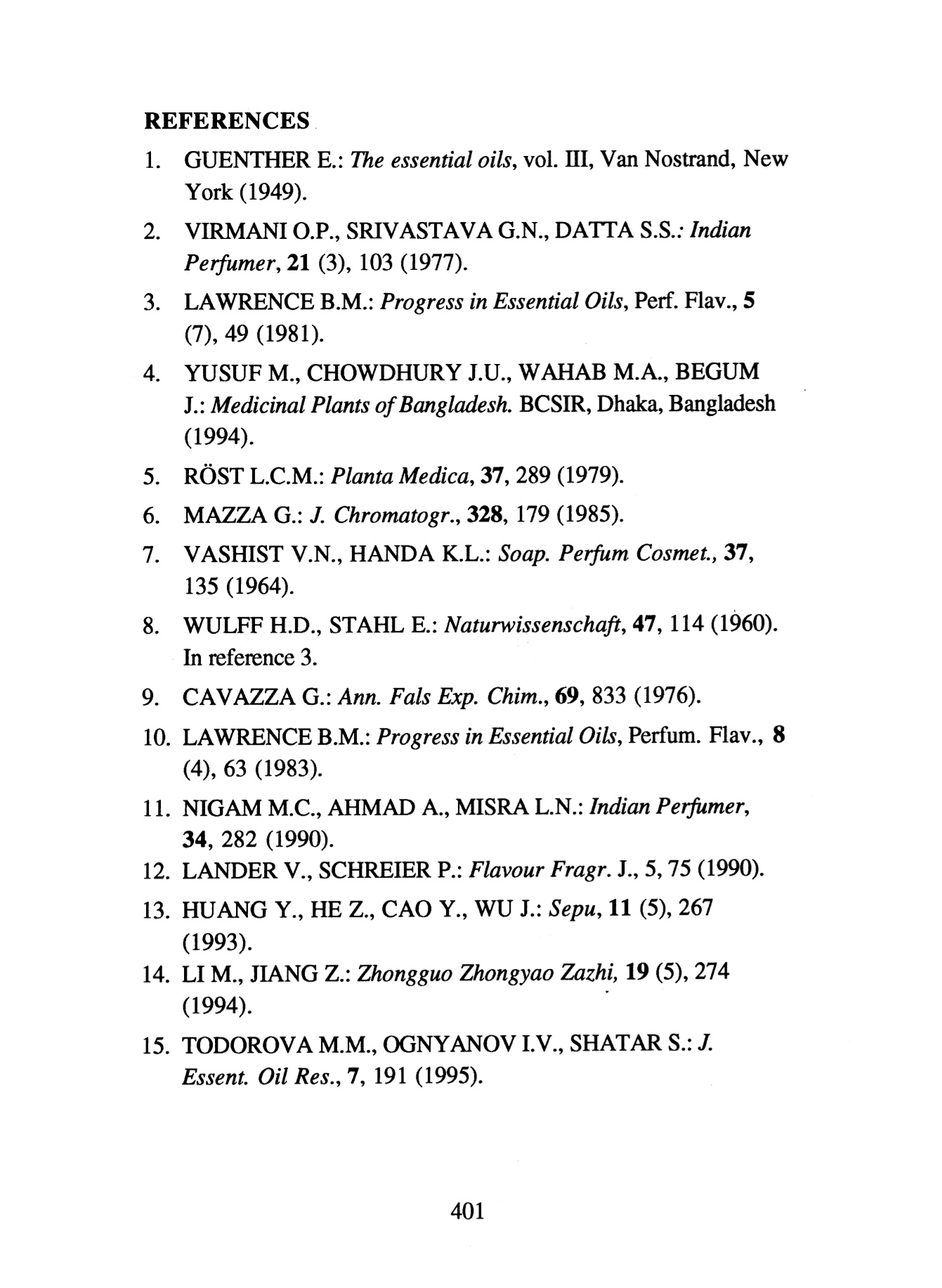
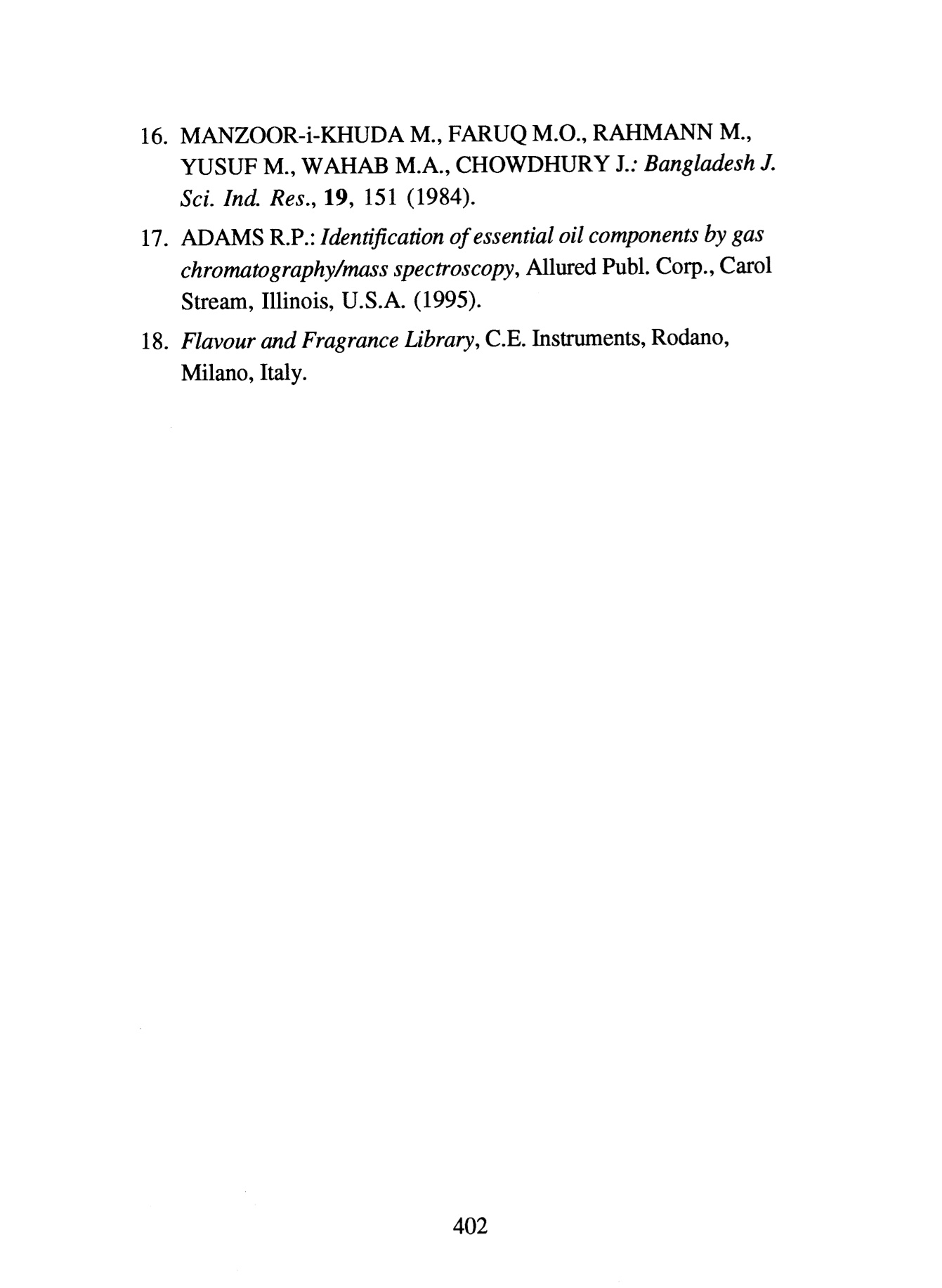
还剩10页未读,是否继续阅读?
扬州华明仪器设备有限公司为您提供《菖蒲油中成分分析检测方案 》,该方案主要用于日用化学品/香精香料中成分分析检测,参考标准--,《菖蒲油中成分分析检测方案 》用到的仪器有
相关方案
更多







